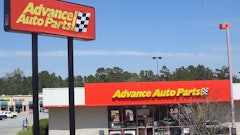
By Andrew Shepherd
In the last few articles we have looked at the training imperative: the technical changes driving an increased emphasis on collision repair training, and the need to implement a learning culture in our organizations. We went on to outline some of the “mechanics” of choosing and delivering training.
These approaches are in some ways unique to Canada, as we have an excellent broadband infrastructure (allowing good quality distance learning) and a coast-to-coast network of community colleges whose mandate is to provide short and long-term technical training, all underpinned by a well-established apprenticeship system. We depend on apprenticeship to build the foundation skills of the “all around” technician who, in theory, goes on to maintain leading edge knowledge and experience through annual short-term training.
There are many who question the “fit” of the apprenticeship model with modern collision repair. It is an indisputable fact that we are evolving from a craft to a high technology industry. The skills development models which were appropriate for a craft era (apprenticeship leading to mastery, followed by sporadic and brief technical training) may simply be unsuited to the current and future state of the industry, where tasks are far more specialized and skill requirements are far more sophisticated.
Apprenticeship is an ancient learning model. Four thousand years ago, the Babylonian Code of Hammurabi provided that artisans teach their crafts to youth. The records of Egypt, Greece, and Rome from earliest times reveal that skills were still being passed on in this fashion. When North America was settled, craft workers coming to the New World from England and other European countries brought with them the practice of indenture and the system of master-apprentice relationships. Notable as well was the relationship between this system and the type and organization of work. Craftsmen generally worked in small workshops (often attached to their homes) and owned all their tools. Work was usually done to order and division of labour was almost nonexistent. A “master craftsman” was required because he or she was responsible for the entire range of production.
The question for us is obvious. Does the production system of a modern collision repair facility require this ancient “master-student” learning model?
Pros and Cons
The US-model of collision skills education, based on two-year technical college programs, has by many accounts failed to deliver enough qualified technicians to the workplace. There are about 300 community colleges and 700 secondary schools delivering collision repair training programs in the US, many with graduate placement rates under 20 percent. Although many of these draw on the I-CAR collision curriculum, which includes performance evaluations, classroom activity plans and teaching preparation materials, as in any system, facilities, equipment, funding and space are often in short supply. In general, the US industry is not well-served by this model and the vast majority of learning is done on the job. How does the Canadian system compare?
Building on Apprenticeship
The shortfalls of our system are apparent to both educators and employers alike. College apprenticeship directors still get Level 2 and 3 students who have never touched a paint gun in the shop—they are kept prepping or cleaning up—and the spirit of the apprenticeship contract is not being fulfilled by the employer, who can see learners interfering with KPIs including cycle time. In this fashion graduates—defined as “masters” of collision repair—can get licensed with almost no real-world training.
Other criticisms are that the apprenticeship curriculum is behind the times, that updates are slow to happen, that schooling is overly theoretical and that release schedules do not cater to industry seasonality.
Nonetheless, our work is not confined to “remove and replace” and the workplace is not (yet) a series of disaggregated and unique tasks. In most cases the technician must have a broad understanding of all aspects of repair and the “product” as a whole, and we must conclude that apprenticeship remains the best model of foundation skills development.
In our next article we’ll look at ways the industry as a whole can contribute to an improved apprenticeship system.
Andrew Shepherd is the Executive Director of I-CAR Canada, a non-profit organization that provides collision repair training and ongoing education. He can be reached via e-mail at andrew.shepherd@aiacanada.com.























